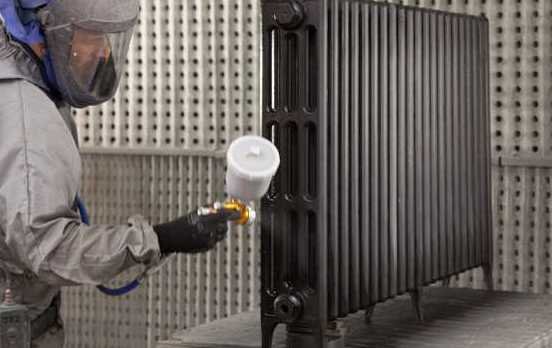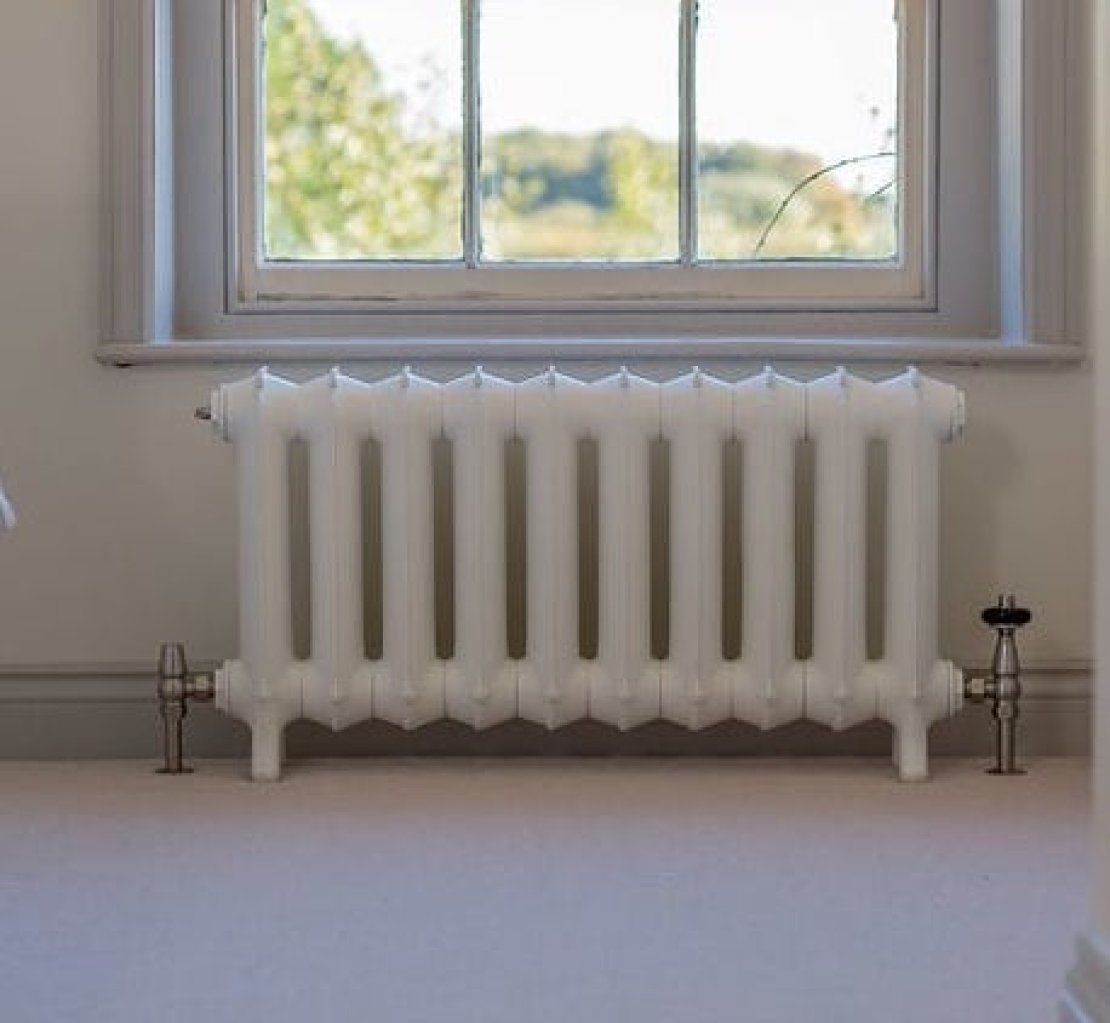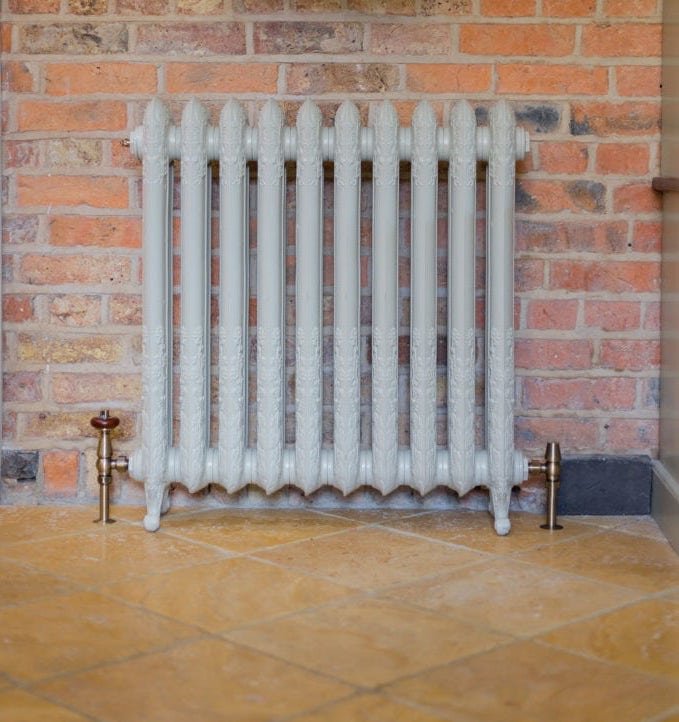This guide can also be followed if you have an old cast iron radiator in your house that has flaking or old paint that you would like to restore with the exception of lead-based paint. We don't recommend the removal of lead-based paint without the advice of a professional. Once you’ve finished, it should look as good as a new cast iron radiator professionally painted from one of our factories, as long as you use the spray painting method. Painting with a brush will never give a perfect finish.
How to prepare your cast iron radiator for painting
The first step is to take the radiator off the wall. This is done as follows: switch off the central heating system and turn off the valves on the radiator. Then undo the bleed valve at the top of the radiator to allow water to escape from the top of the radiator. Have a decorators paint tray or shallow bowl and towel or cloth handy to catch any water and drips that escape. Then undo the valves from the radiator using an adjustable spanner and drain the radiator of its water into a paint tray put underneath the radiator. There could be quite a lot of water so you’ll need to keep emptying the paint tray (or shallow bowl) Removing the water from the radiator is essential and will also make it less heavy if you are carrying it outside or to another room to prepare and paint it.
- Loosen the brackets that secure the radiator to the wall and then remove the radiator from the wall. Drain any residual water into your bowl or paint tray. Cast iron radiators are very heavy so you will probably require some help to lift the radiator away from the wall and carry it to the location where you will be working on the radiator. Carry it upright to make sure you do not damage the seals when moving it, which could cause issues with leaks later.
- If your radiator is old with extensive flaky paint or rust, you might need to get it sandblasted to remove this. If there is only a little rust and flaky paint, you can sand it by hand with very fine sandpaper. Sandblasting is the best solution however as it’s difficult to get into the nooks and crannies with sandpaper - some of these areas are just not accessible by hand. Once the radiator is free of flaky paint and rust, wash and degrease your radiator.
- If your radiator is very old, it might be worth getting the inside of it jetwashed to remove all internal debris. This will help ensure that your radiator works as efficiently as possible once it’s reinstalled.
- If the radiator is in good condition with no flaky paint or rust you can simply wash your radiator and degrease it with sugar soap. This will ensure that the paint sticks to the surface of the radiator. Allow it to air dry completely for a few hours or overnight.
- Before you start to paint, mask off areas that you want to leave unpainted such as threads where the valves screw on etc, with masking tape.
How to paint your cast iron radiator
If you can, its best to spray paint your radiator as this gives a more professional finish. Radiators can also be painted with a brush however this is likely to leave brush marks.
When choosing your paint, make sure it is suitable for painting radiators and will withstand high temperatures. Farrow and Ball make paints suitable for radiators including eggshell and gloss. If you’re on a tight budget, specialist paint shops will be able to mix paints for you that are suitable for radiators to any colour you take with you as a colour swatch. Metallic colours can be purchased from our website. Always use a metal primer and undercoat on any areas where the radiator has been sanded back to bare metal to ensure that the radiator will not rust under the paint.

It’s better to do several thin coats of paint rather than fewer thick coats so make sure your paint is not too thick.
Put your radiator on a suitable surface where you can access all areas of it and spray paint up and down in an even coat, making sure that the paint reaches the inside of the columns. Repeat for the back of the radiator and also spray from underneath and on top to ensure no surface remains unpainted. Allow to dry for at least 4 hours either outside or in a well ventilated room. The radiator will probably require 2-3 coats of paint.
When its completely dry, remove the masking tape and re-install your cast iron radiator.


Be the first to add a comment...